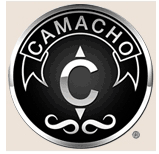Cigars - Camacho cigars
 |
Camacho and its producers play an important role in the history of the cigar. The brand was founded in Miami, in 1961, by Simon Camacho. In 1995, it was acquired by Caribe Imported Cigars, a company owned by the Eiroa family, originally from Cuba but now active in the USA and in Honduras. In October 2008, Camacho became part of the Oettinger Davidoff Group. |
The Camacho story begins in 1961, the year in which Simon Camacho, forced into exile from Cuba, opened a factory in Miami and set about making cigars using tobacco of Central American provenance. His brand soon also gained an excellent reputation beyond the shores of the USA. Among its aficionados was the legendary British wartime Prime Minister Winston Churchill, after whom Camacho had named one of its formats.
Camacho Cigars
|
In 1995, five years after the death of its founder, Camacho was acquired by the Eiroa family. The Eiroa family has been growing tobacco since the early 1900’s. First, Generoso Eiroa, in Cuba but in the wake of the Castro revolution and subsequent nationalization of the tobacco plantations, his widow and three sons were forced to leave the country without a penny to their name and settled in Tampa, Florida. Julio Eiroa joined the Bay of Pigs invasion attempt as one of a force of Cuban exiles with the US Army. |
The Eiroa family has been growing tobacco since the early 1900’s. First, Generoso Eiroa, in Cuba but in the wake of the Castro revolution and subsequent nationalization of the tobacco plantations, his widow and three sons were forced to leave the country without a penny to their name and settled in Tampa, Florida. Julio Eiroa joined the Bay of Pigs invasion attempt as one of a force of Cuban exiles with the US Army. While his brother, Generoso Jr. worked in Nicaragua, Julio travelled to Honduras in 1963 on behalf of tobacco dealer Angel Oliva. There, as part of a government project, he laid the foundations for today’s extensive tobacco plantations belonging to the Eiroa family.
After his first year with the Oliva Family, Julio Eiroa decided to become an independent farmer. A decision that would prove to be one to change the history of tobacco growing in Honduras. Julio Eiroa year after year, would buy the government tobacco farms. Through commercial partnerships with companies such as Bering Cigars and US Tobacco, he would become the world’s largest Candela (the green leaf) tobacco farmer by 1972.
In the 1980s, Eiroa returned to the USA and in 1987 began to build up Caribe Imported Cigars in Miami. The company produced two popular cigar brands: “Baccarat” and “National Brand”. These were later joined by a so-called cafeteria-cigar by the name of “Don Felo”, that sold for 20 cents, and in 1992 by “La Fontana”. In those days, production totalled around 2–3 million cigars a year and grew massively in the subsequent cigar boom years of the 1990s. The year 1995 saw the acquisition of Camacho Cigars by the Eiroa family, accompanied by the transfer of tobacco production for this brand from Nicaragua to Honduras.
